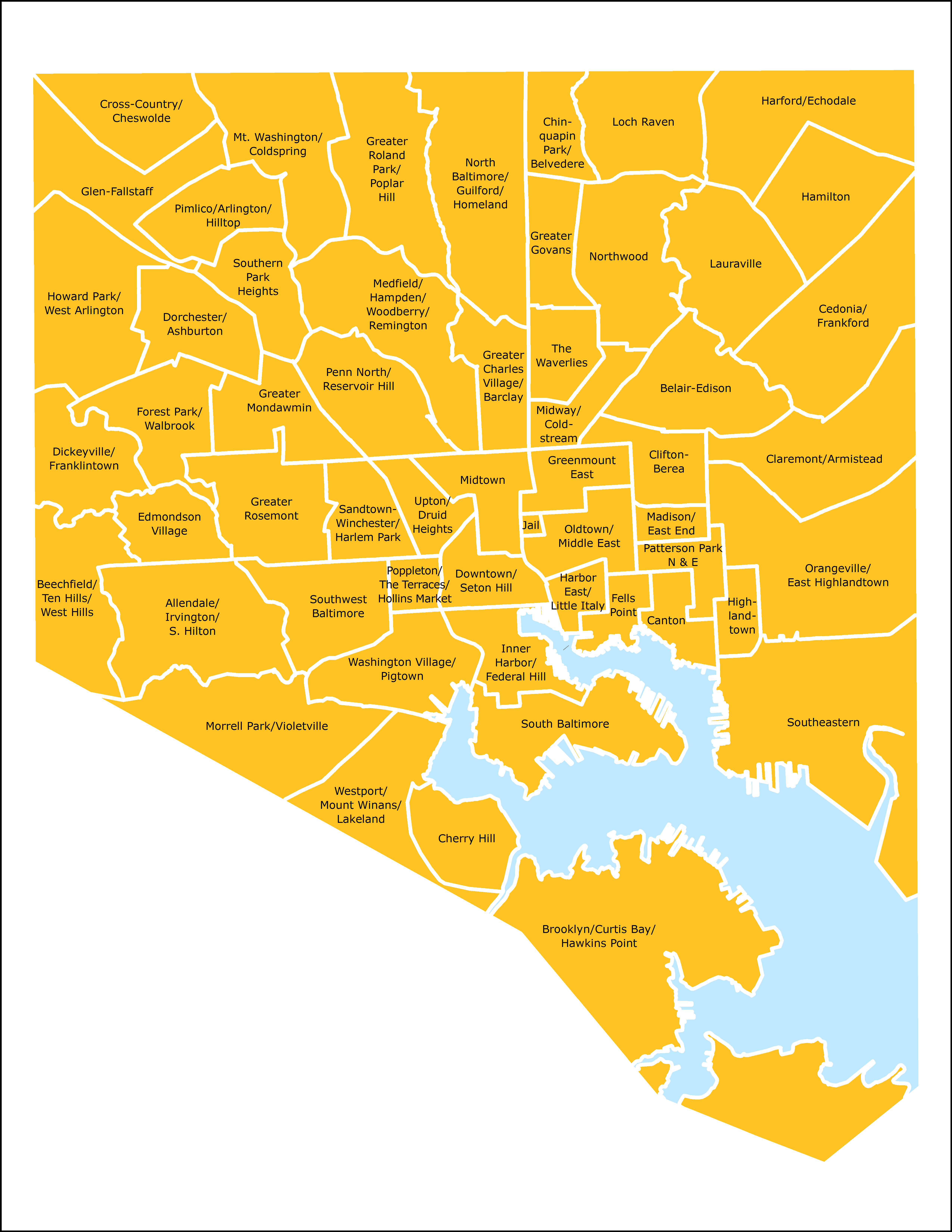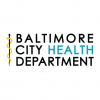Neighborhood Health Profile Reports
Neighborhood Health Profile Reports
The Neighborhood Health Profiles bring together data about significant health outcomes and present them for each of the 55 Community Statistical Areas in the city of Baltimore. Community Statistical Areas are clusters of neighborhoods developed by the City’s Planning Department based on recognizable city neighborhoods. Each NHP compares the CSA’s health outcomes to the city as a whole. Analysis of these data reinforces that where we live, learn, work, and play has a powerful impact on our health.
Please select a neighborhood from the list below to view that neighborhood's health profile. Please click here to learn more about these reports and to see citywide data.
This page contains links to files that may require additional software to view. You may download a free viewer here.
NOTE: These 55 reports were revised on June 9, 2017. Please ensure you are using the most recent version.
2017 Neighborhood Health Profile Data Downloads
| Community Statistical Area | 2008 | 2011 | 2017 |
|---|---|---|---|
| Allendale/Irvington/South Hilton | |||
| Beechfield/Ten Hills/West Hills | |||
| Belair-Edison | |||
| Brooklyn/Curtis Bay/Hawkins Point | |||
| Canton | |||
| Cedonia/Frankford | |||
| Cherry Hill | |||
| Chinquapin Park/Belvedere | |||
| Claremont/Armistead | |||
| Clifton-Berea | |||
| Cross-Country/Cheswolde | |||
| Dickeyville/Franklintown | |||
| Dorchester/Ashburton | |||
| Downtown/Seton Hill | |||
| Edmondson Village | |||
| Fells Point | |||
| Forest Park/Walbrook | |||
| Glen-Fallstaff | |||
| Greater Charles Village/Barclay | |||
| Greater Govans | |||
| Greater Mondawmin | |||
| Greater Roland Park/Poplar Hill | |||
| Greater Rosemont | |||
| Greenmount East | |||
| Hamilton | |||
| Harbor East/Little Italy | * | * | |
| Harford/Echodale | |||
| Highlandtown | |||
| Howard Park/West Arlington | |||
| Inner Harbor/Federal Hill | |||
| Jonestown/Oldtown | * | ||
| Lauraville | |||
| Loch Raven | |||
| Madison/East End | |||
| Medfield/Hampden/Woodberry/Remington | |||
| Midtown | |||
| Midway/Coldstream | |||
| Morrell Park/Violetville | |||
| Mount Washington/Coldspring | |||
| North Baltimore/Guilford/Homeland | |||
| Northwood | |||
| Oldtown/Middle East | * | * | |
| Orangeville/East Highlandtown | |||
| Patterson Park North & East | |||
| Penn North/Reservoir Hill | |||
| Perkins/Middle East | * | ||
| Pimlico/Arlington/Hilltop | |||
| Poppleton/The Terraces/Hollins Market | |||
| Sandtown-Winchester/Harlem Park | |||
| South Baltimore | |||
| Southeastern | |||
| Southern Park Heights | |||
| Southwest Baltimore | |||
| The Waverlies | |||
| Upton/Druid Heights | |||
| Washington Village/Pigtown | |||
| Westport/Mount Winans/Lakeland |
* Community Statistical Area (CSA) boundaries were redrawn after the 2010 decennial U. S. Census; most notably, the area originally comprised of the CSAs Jonestown/Oldtown and Perkins/Middle East is now comprised of the CSAs Harbor East/Little Italy and Oldtown/Middle East. This change occurred during the publication of the 2011 Neighborhood Health Profiles; hence those and the 2008 reports refer to the original CSA boundaries, while the 2017 reports refer to the redrawn CSA boundaries.
Community Statistical Area Boundaries for the 2017 Neighborhood Health Profiles

Community Statistical Area Boundaries for the 2008 and 2011 Neighborhood Health Profiles
